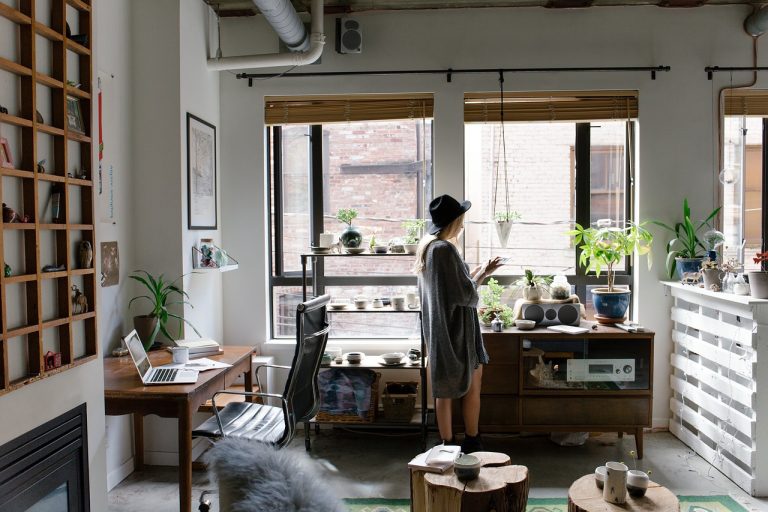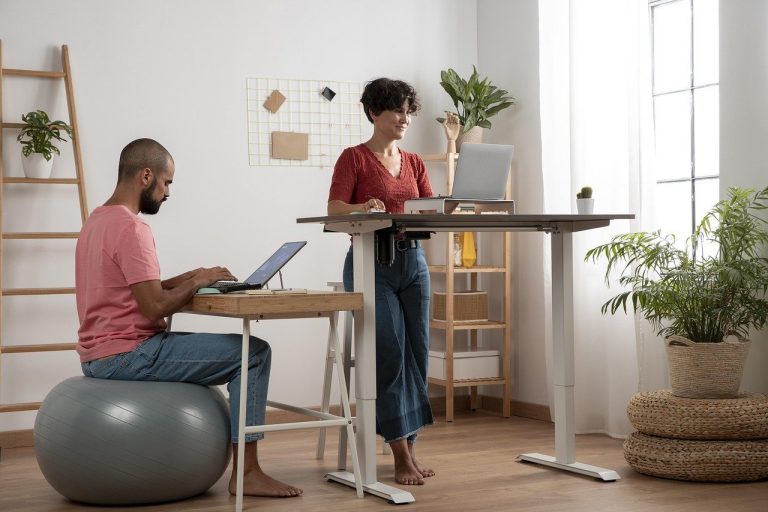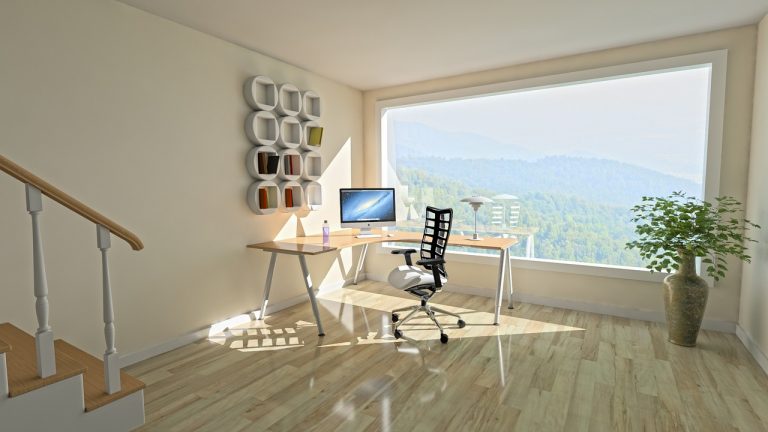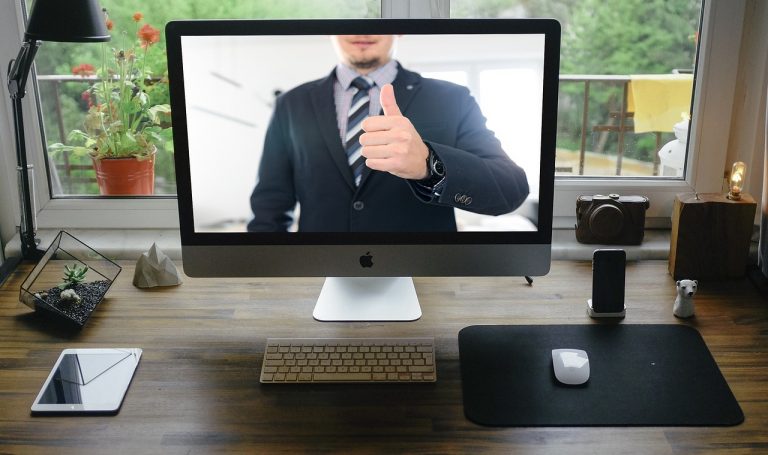Optimizing Lighting for Video Conferencing in Small Spaces
Optimizing Lighting in Small Spaces for Video Conferencing
As remote work continues to become a norm, video conferencing has become an essential tool for professional communication. However, setting up a video conferencing space in a small room can be challenging.
One of the most important aspects of a successful video call is proper lighting. Poor lighting can make it difficult for others to see you clearly, and can detract from the professionalism of the call.
In this article, we will discuss how to optimize lighting in small spaces for video conferencing.
Understanding the Basics of Video Conferencing Lighting
Before diving into how to optimize lighting for video calls, it’s important to understand the basics of video conferencing lighting.
Natural light is the best option for video conferencing, as it provides even, diffused lighting. However, not all small spaces have access to natural light. In this case, artificial lighting can be used.
It’s important to avoid overhead lighting, as it can create unflattering shadows on the face. Instead, opt for a combination of ambient and task lighting.
Optimizing Natural and Artificial Light Sources
When it comes to natural light, it’s important to position yourself facing a window to avoid harsh shadows.
If natural light is not an option, task lighting can be used to supplement artificial lighting.
A table or floor lamp with a shade can be placed in front of you, and a bright, unshaded electric light can be aimed at a nearby wall to create a soft reflection of light on your face.
By combining natural and artificial light sources, you can create a well-lit video conferencing space that enhances professionalism.
Key Takeaways
- Proper lighting is essential for successful video conferencing in small spaces.
- Natural light is the best option, but artificial lighting can be used to supplement.
- A combination of ambient and task lighting can be used to optimize lighting for video calls.
Understanding the Basics of Video Conferencing Lighting
Importance of Proper Lighting
Lighting is a crucial aspect of video conferencing that is often overlooked. Poor lighting can result in a grainy, blurry, or dark image, making it difficult for participants to see each other clearly.
Proper lighting can help to eliminate these issues and create a more professional and engaging video conferencing experience.
Types of Lighting
There are two main types of lighting that are used in video conferencing: natural light and artificial light.
Natural light is the light that comes from the sun and can be a great source of light for video conferencing. However, it can be difficult to control and can change throughout the day, which can affect the quality of the video.
Artificial light, on the other hand, is the light that comes from lamps, overhead lights, and other light sources. This type of lighting is easier to control and can be adjusted to create the perfect lighting setup for video conferencing.
When setting up lighting for video conferencing, it is important to consider the color temperature and brightness of the light.
Color temperature refers to the warmth or coolness of the light and can affect the way colors appear on camera. Meanwhile, brightness refers to the intensity of the light and can affect the clarity of the image.
To create the perfect lighting setup for video conferencing, it is recommended to use diffused light.
Diffused light is light that has been scattered or reflected, creating a soft and even light that is ideal for video conferencing. This can be achieved by using a lamp with a shade or by using a diffuser on an overhead light.
Optimizing Natural and Artificial Light Sources
When it comes to optimizing lighting for small spaces for video conferencing, it is essential to have a good balance between natural and overhead lighting.
Natural light is the best source of light as it is easy on the eyes and gives a more natural look to the surroundings. However, it is not always possible to rely solely on natural light, especially in small spaces.
Therefore, it is important to choose the right artificial lighting products that can help to enhance the natural light and create a well-lit environment.
Balancing Natural and Overhead Lighting
Windows are a great source of natural light for small spaces. They allow sunlight to enter the room, which can help to create a bright and airy atmosphere.
However, too much natural light can be overwhelming and cause glare on screens during video conferencing. To avoid this, it is important to balance natural light with overhead lighting.
Overhead lights can help to reduce the amount of glare and create a more even distribution of light in the room.
Choosing the Right Artificial Lighting Products
LED desk lamps are a great option for small spaces as they are energy-efficient and provide a focused light source. They can be adjusted to different angles and brightness levels, making them perfect for video conferencing.
When choosing the best lighting products for video conferencing, it is important to consider the color temperature of the light. Cool white light is best for video conferencing as it provides a more natural look to the surroundings.
Setting Up Your Lighting for Video Calls
When it comes to optimizing lighting for video conferencing, there are a few key factors to consider.
Proper lighting can help to reduce harsh shadows and glare, while also providing a more professional and polished appearance.
In this section, we will explore some tips for setting up your lighting for video calls, including positioning key lights and fill lights, as well as controlling brightness and reducing glare.
Positioning Key Lights and Fill Lights
One of the most important aspects of lighting for video calls is the use of a three-point lighting setup.
This involves positioning a main light source, or key light, to provide the majority of the illumination on the subject’s face. A fill light can also be used to provide additional illumination and help to reduce harsh shadows.
When positioning key lights and fill lights, make sure to consider the angle and distance of the lights. According to experts, the key light should be positioned at a 30 to 45-degree angle to the subject, rather than directly in front of them.
The fill light should be positioned on the opposite side of the key light, at a lower intensity.
Controlling Brightness and Reducing Glare
Another important consideration when setting up lighting for video calls is controlling brightness and reducing glare.
This can be achieved through the use of dimmer switches or by adjusting the position of the lights.
According to The Lighting Practice, it is also important to avoid backlighting, which can create harsh shadows and make it difficult to see the subject’s face. Instead, aim to position the lights in front of the subject, either to the side or above.
Enhancing Professionalism in Small Spaces
When it comes to video conferencing, lighting plays a crucial role in creating a professional look. This is even more important when working in small spaces such as a home office, meeting room, or huddle room.
In this section, we will discuss how to optimize lighting in small spaces to enhance professionalism during video conferencing.
Minimizing Distractions and Maximizing Space
In small spaces, it is important to minimize distractions and maximize space to create a professional environment during video conferencing.
One way to do this is by using wall-mounted shelves or filing systems to keep the area organized and clutter-free. This helps create a clean and professional look that is essential during video conferencing.
Another way to maximize space is by using vertical space.
Installing wall-mounted shelves, filing systems, and other vertical surfaces lets you create more space and keep your office organized. This not only maximizes space but also helps to minimize distractions during video conferencing.
Lighting for Different Types of Video Conferencing Rooms
Different types of video conferencing rooms require different lighting setups to create a professional look.
For example, a home office may need a different lighting setup compared to a small meeting room or huddle room.
In a home office, natural light is a great way to create a professional look.
Positioning the desk near a window can help to maximize natural light and create a bright and airy environment.
If natural light is not available, a desk lamp or floor lamp can be used to create a warm and inviting environment.
In small meeting rooms or huddle rooms, overhead lighting is important to create a well-lit space.
Using LED light fixtures or recessed lighting can help to create a bright and professional environment.
It is important to position the lighting in a way that does not create shadows or glare on the video conferencing participants.







